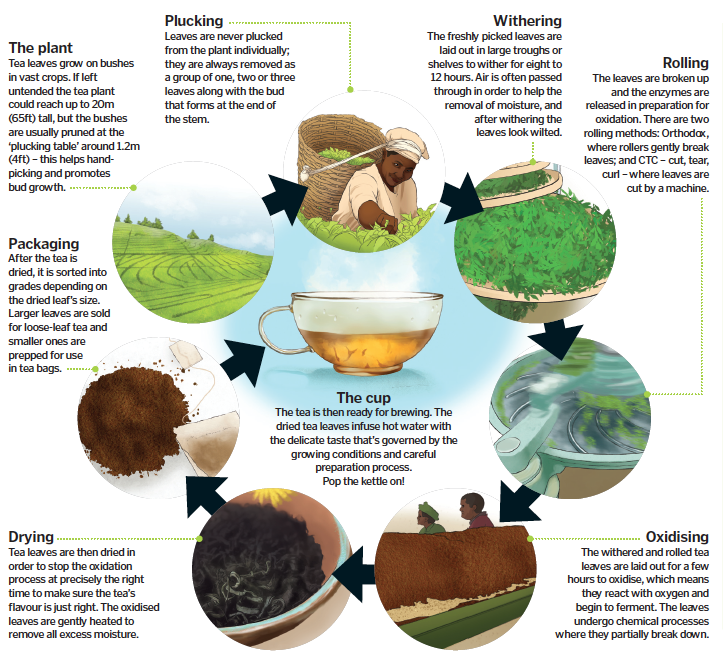Where does tea come from?
Follow the journey from the field to the teacup.
Tea, the hot beverage enjoyed so much in the UK that it has become as quintessentially British as the Queen, begins its life as juicy young leaves on a bush of the Camellia family. The species Camellia sinensis originates from China and the Camellia sinensis assamica variant is the Indian tea variety. Tea bushes are grown in vast crops in hot, humid areas with regular rainfall. China, India, Sri Lanka and Kenya are the top four countries, representing 75 per cent of the world’s tea production. Factors such as climate, altitude and humidity affect the quality and taste of the tea crop – much in the same way as grapes and wine – and their leaves are expertly selected and plucked by hand. Black tea, the kind you’re probably enjoying with milk and one sugar as you read this, is made from new, tender tea shoots, typically the first few leaves and a bud. Once picked, the leaves go through four main steps before they’re ready for brewing in a teapot and accompanying some afternoon cake: withering, rolling, oxidation and drying. For different tea varieties, these steps are modified and adapted, which helps to produce such a huge array of different tea flavours and types.
The four main types of tea are black tea, green tea, white tea and oolong tea. They all originate from the same plant, and it is their preparation that defines their taste. White teas only use the very first buds at the top of a new season’s tea plant, which can only be plucked once a year. All four types of tea leaves are withered first – a process that reduces the moisture content. Once withered, leaves for making green tea are then steamed or pan-fried. This stops the oxidation process – meaning there is no further reaction with oxygen – which is why the leaves keep their natural green colour, giving the tea its name. Oolong tea is semi-oxidised, placing it somewhere between green and black tea. The partial oxidation allows the leaves to briefly ferment, producing more distinctive flavour. The leaves are then rolled and dried ready for brewing.

For more tech news, pick up your copy of Issue 101 from all good retailers or from our website now. If you have a tablet or smartphone, you can also download the digital version onto your iOS or Android device. To make sure you never miss an issue of How It Works magazine, subscribe today!





